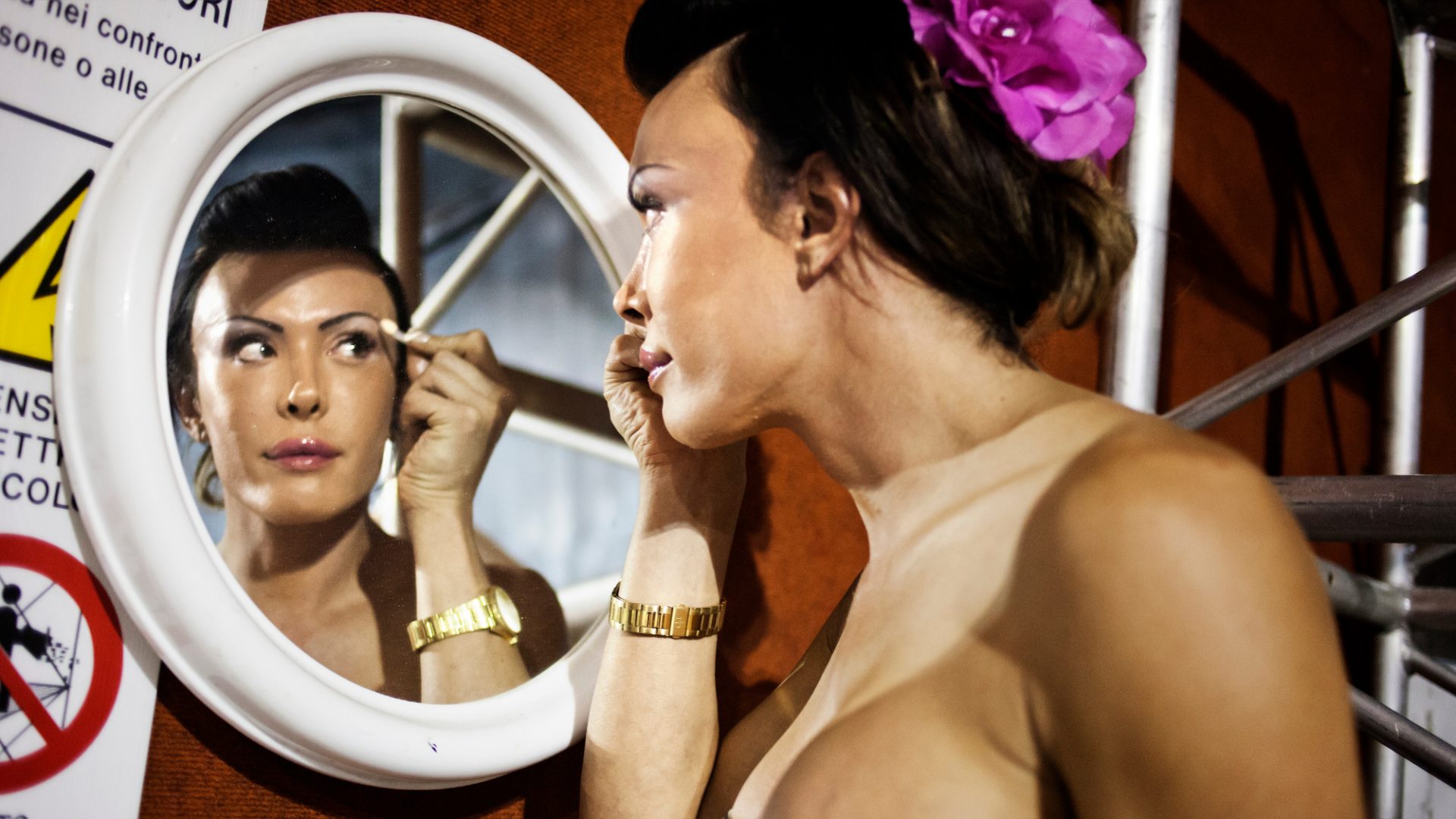I first met Mara Ceccherini 35 years ago, a teenage apprentice hairdresser with a cascade of blonde, corkscrew curls, a Marilyn Monroe décolleté and pout. She worked in the salon opposite my grandmother’s house in Naples and I remember vividly her youthful confidence and glamour even though I perceived an “otherness” that was hard to define.
Today, Mara is the salon’s proprietor and we are firm friends. This is how I know that when she was born 52 years ago, her parents registered her sex as male.
Why is this relevant? Because as conservative politicians the world over use trans culture wars to distract from more pressing domestic issues, Mara’s existential serenity over decades reminded me of my birth city’s ancient relationship with, and unique affection for, those who embody a third sex.
In Italy last year, the prime minister, Giorgia Meloni, ramped up the gender rhetoric even further, conflating surrogacy – already opposed by a majority of Italians – with LGBTQ+ rights. Despite Pope Francis’s recent pronouncements on allowing transgender baptisms and blessings of single-sex unions, the political debate has fuelled an increasingly hostile environment for the country’s queer community.
And yet I have known since childhood that in Neapolitan popular culture, transgender individuals are imbued with a sprinkle of magic, harbingers of good fortune to the households in which they were raised, and even asked to hold newborns to transmit their luck.
The Neapolitan dialect itself has its own word for those who don’t fit the most common concepts of masculinity – femminiello – linguistically unusual because in Italian, feminine words end in “a” and masculine words end in “o”. This means “femmina’” was deliberately morphed to the masculine and a diminutive suffix, “ello”, added denoting endearment.
The game of tombola, now known as bingo or lotto, originated in Naples in the 1700s. The femminielli used to call the numbers and were seen as skilled practitioners of the folk art La Smorfia, which translated dream images into winning numbers.
Traditionally associated with the Quartieri Spagnoli, Naples’ poorest and most overcrowded neighbourhoods, the femminielli were not shunned but instead encouraged to look after children or the elderly, forging social respectability within the patriarchal norm. (Prostitution also played a part, particularly in wartime, but was perceived as a contribution in times of extreme poverty, and as an alternative sexual outlet for men in a homophobic culture where virginity was valued and married women out of bounds)
In retrospect, I don’t remember hearing the word femminiello used in a derisory way despite an easy deployment of the ugly slang for homosexual, ricchione. More recently, walking the narrow alleyways of the neighbourhood, I was struck by the juxtaposition of posters in praise of the football legend Diego Maradona and the winning World Cup team with a spectacular, hand-painted mural of La Tarantina, octogenarian Neapolitan muse of Federico Fellini and Pier Paolo Pasolini and the most famous of the old school femminielli.
Where else in the world are great sportsmen celebrated cheek-by-jowl with an older trans woman?
And yet in an interview at the unveiling of her mural in 2018, La Tarantina decried the modern gender debate: “I don’t even really know what trans means… but if I did, I know I’d refuse the label.”
Prof Paolo Valerio of Naples Federico II University and his colleague Dr Carolina Vesce have spent decades researching gender fluidity in many indigenous cultures, and argue that the Neapolitan femminiello is truly sui generis, both archaic and post-modern.
“This is a uniquely southern Mediterranean phenomenon, expression of an urban culture that is still distinctly patriarchal, hetero dominant and stigmatises the effeminate male and yet, paradoxically, also has roots in an ancient cultural veneration of all that is feminine, as we see in archaeology and the history of Mediterranean art,” Valerio said.
“And if you were born into a higher social class, of course you wouldn’t be called femminiello.”
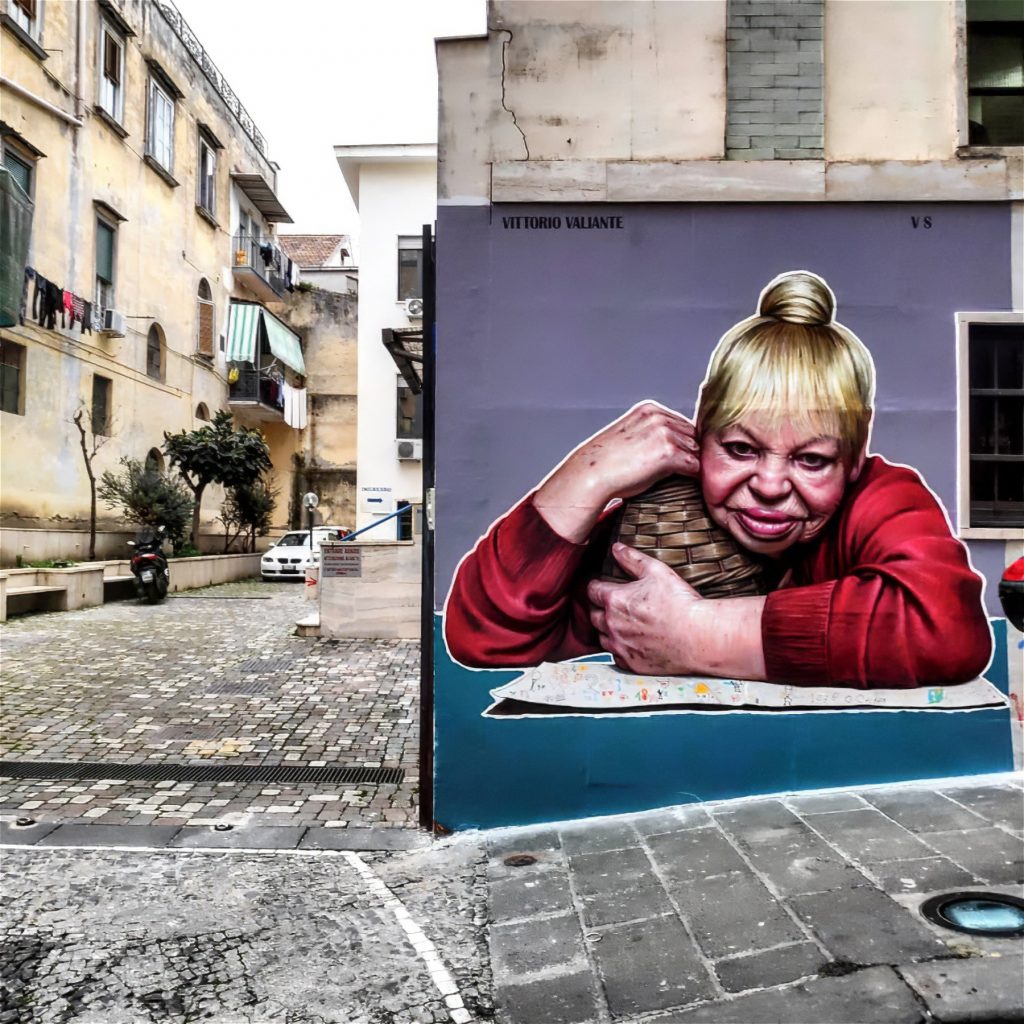
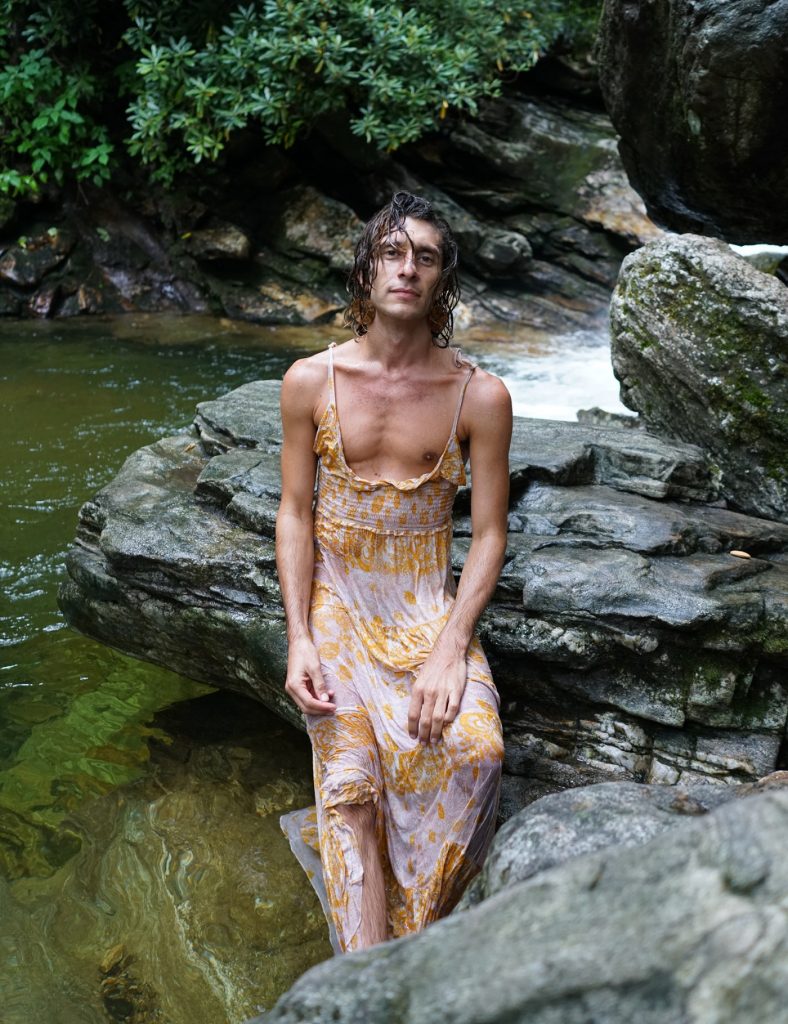
Vesce argues that the people she has met in her Neapolitan research embody all nuances and shades of being, from the effeminate homosexual to the modern trans. They are, she says, capable of challenging the social order of gender precisely because they represent something indefinable and unrecognisable: “These are people who don’t fight for equal marriage, are not interested in the right to adopt children: in fact, in the past, they have traditionally re-enacted [hetero] marriages, conducted performative birth rites, call bingo numbers, take part in the Candlemas pilgrimage.”
Indeed, femminielli did – and still do – play visible, joyful roles in the city’s folkloric, musical and religious traditions, including the February 2 Candlemas procession to the sanctuary of Montevergine outside Naples. Now joined by the queer community, the femminielli lead the tammurriata, a frenetic tambourine dance said to prepare the body for spiritual ecstasy, and celebrations can stretch from day to night, a kind of ancient rave.
Central to proceedings is Mamma Schiavona (Slave mama), a black Madonna who, in 1256, was said to have miraculously saved the lives of two young male lovers tied naked to a tree and left to die in the snow outside her church.
Legend has it that in the third century BC, the site was occupied by a temple dedicated to the Anatolian Mother Goddess Cybele, whose consort, Attis, castrated himself in a fit of divine frenzy. The Greco-Roman world absorbed the Cybele cult including her priests, known as Galli, who practised self-castration and worshipped as women. Montevergine and the sanctuary have been seen as a place of tolerance, acceptance, and refuge ever since.
Summer Minerva, 36, a New York artist, first visited Naples in her late 20s, in search of her Italian-born grandparents’ cultural roots and “salt of the earth” values she treasured but found difficult to reconcile with being queer. During a tour of the churches of the black Madonnas, someone in the street called her a femminiello, a word she didn’t recognise but which she sensed had secret meaning.
“Coming from an American gay culture, being an effeminate queer is considered a turnoff for many gay men. I had a complicated relationship with this, a hindrance to the intimacy I longed for. I have always been very individual, I know what I love: spirituality, folk dance, music. So many things set me apart from the queer community. But when someone called me femminiello it was sexualised, sort of flirty, and for the first time, in Naples, I felt sexual power as an effeminate being.”
Globalisation, she argues, is threatening popular cultures while people try to find ways to reconnect with the things they were born into or came from: “Others like me, from the new world and who didn’t grow up with it are feeling a sense of loss and want to be a part of it.”
Minerva has now shot and narrated a documentary about her search for what she calls her “transcestry” using her mother and grandmother’s immigration and cultural connections to explain the journey to understand herself.
While trans communities in the English-speaking world often highlight the lack of credible, positive transgender figures in literature and art, there are significant Neapolitan femminielli front and centre of musical and literary works over the last century, from Curzio Malaparte’s gruelling, autobiographical wartime novel La Pelle to Roberto De Simone’s hugely successful opera, La Gatta Cenerentola. In Roberto Saviano’s best-selling book Gomorrah, later made into a Netflix series, Camorra boss Don Salvatore Conte’s great love is Nina, a trans woman.
Most recently, a femminiello known as Bambinella is one of the most clever and high-profile characters in the global best-selling Commissario Ricciardi detective novels written by Maurizio De Giovanni, now in its second TV series. The role of Bambinella has propelled the Italian stage actor Adriano Falivene to national fame.
Vesce observes that the femminiello has become emblematic of the city itself, a symbol of Neapolitaness almost as powerful as Pulcinella or Maradona.
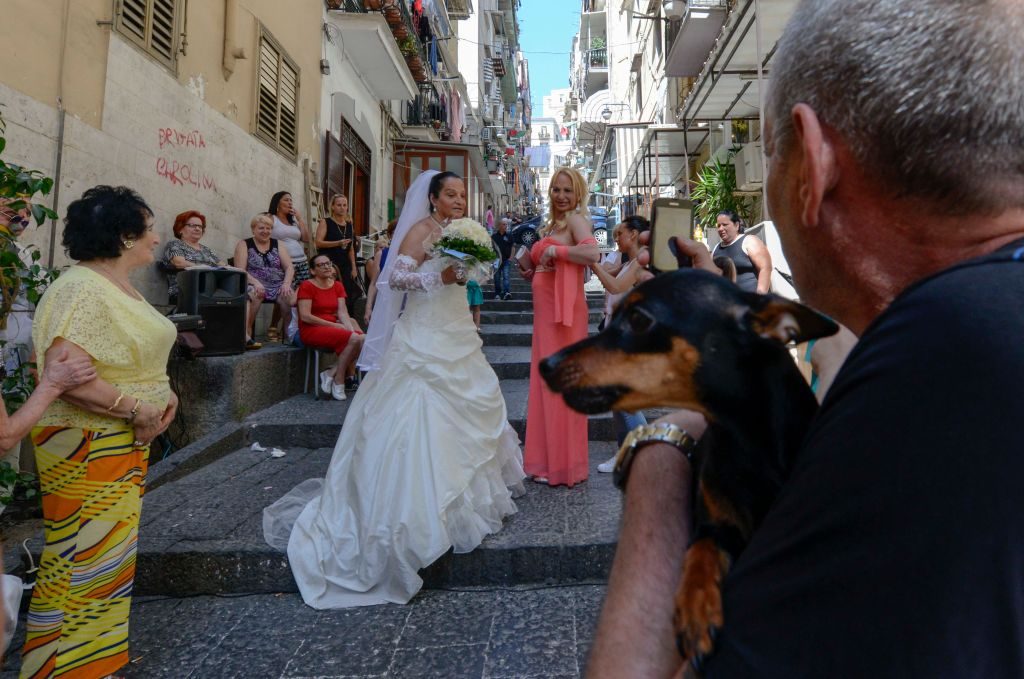
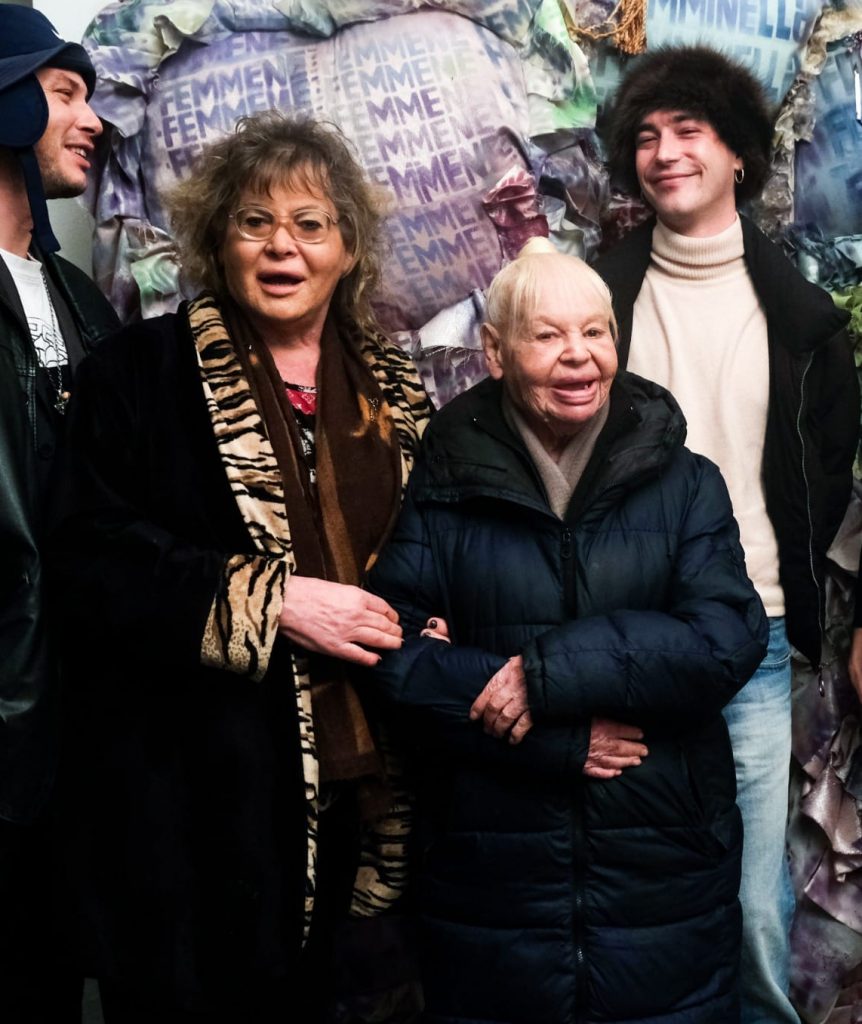
Chatting with Ceccherini and other trans women, I asked them about their experiences in the context of Neapolitan culture and the gender debate in other countries. Their observations underline that in Naples, too, family support is key, and discrimination remains rife but societally, the complexities are different and riven across a generational divide.
There are those who, like La Tarantina, feel part of the ancient femminiello culture, rejecting hormones and modern political labels; and a younger cohort suspicious of integration, open to medical intervention and wanting legal rights their older sisters eschew. There are also those like Minerva who are keen to nurture aspects of the past in a bid to forge a fresh cultural path in the middle.
“I find it burdensome to be defined by gender: for some trans people it is important to receive affirmation, but I’ve never had dysphoria, felt that my body doesn’t match my soul,” Minerva says. She wants greater understanding that gender beyond the binary is a phenomenon as old as humanity: “All that has changed is community response. We need to pay attention to ancestral cultures… I don’t want to recreate the past, but I would like it to inform our understanding and help us envision the kind of future we want. That is the heart of my work.”
Ceccherini explained her own unique experience: “I tell you this sincerely: I never had a change, in my mind, I was always a girl. As a little child, in the pram, I had blonde curls and feminine facial and bodily traits. My mother told me that people would stop and say to her ‘what a pretty little girl’. I always felt I was female, and it wasn’t until late primary school, when I began to understand things a bit more…” she said.
“I never talked to my mother about it – she talked to me. My brother is 10 years older than me, an effeminate gay man, and my mother had lived this experience with him already… she understood what I was and gave me total freedom, not just in my way of being but in my decisions, too.”
Ceccherini’s mother, Gian Carla, 82, has two other daughters and four grandchildren, and sees Naples as a tolerant city uniquely open to differences, but familial support is what matters most in the end. “I fought at times with their father about this, but I know what is in my children’s souls, I see the beauty inside.”
In Naples, the very first written mention of the femminiello dates back to 1586 in De Humana Physiognomonia, an eyewitness account of an “effeminate man” by the Neapolitan Renaissance polymath, Giovanni Battista Della Porta.
“Small lips, delicate eyelashes, of weak voice with bashful gaze… happily tending the home and kitchen… avoiding men but conversing easily with women, seemingly more feminine than females themselves… using feminine adjectives to say sad me [trista me], bitter me [amara me]”.
Valerio notes that even then there was no language of discrimination: “What the writer describes is solely what he sees. It exemplifies the general acceptance of the femminielli within the fabric of Neapolitan society and tradition.”
Later research in the early 1980s uncovered an engraving, dated to the late 1700s, captioned “Naples Effeminates Dance the Tarantella” (probably part of a travel account or guide), which shows two young men dressed in male garb with tambourines in feminine dance poses. The only other known depiction prior to the advent of photography is a painting discovered in a New York sale in 2014 and now in the Portland Art Gallery. Dated to the 1760s, it was painted by a portrait artist in the court of King Carlo III and shows a man in flowing coloured robes helping another to dress in women’s clothing. Bold and striking, it too embodies nothing negative or derisory.
Of course, Neapolitans are not alone in the contemplation of a mismatch between biological sex and the subjective experience of belonging to a particular sexual gender. Art and mythology show us that it has been pondered by humanity since time immemorial: anthropological research has documented many indigenous cultures that embrace gender fluidity without pathology – until colonisation and European dominance.
The Kathoey or “ladyboys” of Thailand, Laos and Cambodia are probably the best known, but in North America, too, there are more than 110 indigenous tribes in which men and women adopt fluid gender roles. Far from being considered deviant, this group – known collectively to researchers as the Berdaches – were seen to be gifted beings with the capacity to understand and navigate two opposing sides. It was the Spanish conquistadores who abnormalised the men, reviling them as sodomites.
In Myanmar, the Acaults – biologically male but living as women – were also considered seers, important to Burmese spiritual activities. In India the Aravanis, a subset of the hijra communities, adopt female identities, while parents in some Madagascan and Samoan ethnic groups bring up boys deemed to exhibit feminine characteristics as girls who later have adult sexual relationships with either sex without stigma.
Angelica Visconti, 66, and Loredana Rossi, 62, are both powerful voices for trans rights in Naples. Rossi founded the Trans Association of Naples, while Visconti is a naturopath trained in Chinese medicine, and a regular volunteer for the group.
Close friends and united as colleagues, they could not have had a more different life trajectory.
Visconti, eloquent, highly educated and a long-time student of Taoist traditions, says she took 55 years to finally embrace and live her female identity. She married, had a child, divorced, and embarked on a second, 17-year relationship with a woman whom she thinks now was probably masculine in her own orientation. Visconti argues that Naples has “two faces”: “On one side, there is the centuries-old culture of the femminielli, part of the living fabric of the poorest of this city and stemming from a time when there were no hormones, no surgery and people lived as best they could as women, helping other women, with children, home, elderly. Everything changed when surgery and hormones came.”
The darker side of the city, she says, is the one still inculcated in patriarchal tradition and misogyny when the inter-sex child is not seen with kindness but thrown out of the family – the clients she sees every day while volunteering.
“It is more complex now among men who have latent homosexual tendencies and seek out trans women who have not had surgery: if they meet them the next day, at best they ignore them… [others] are capable of violence.”
Rossi felt female in her earliest memories, but was sent by her horrified father to a boarding school run by nuns. There, she embarked on her first adolescent love affair with a boy two years older, only to spend the next 24 years in a silent, existential prison: “I wanted to be a good boy, a good son, a good brother. I didn’t want to give my mother pain. I used to pray to God and the Madonna at night in the hope that I wouldn’t wake up in the morning,” she says. In a fit of rage one day, her father threw her out on to the street, and it was a trans girl who took her in and introduced her to prostitution to survive.
Rossi’s ferocious battle to live as a woman meant two decades working on the streets, until she crossed paths with Daedalus, a cooperative that provides medical and social support for sex workers. In 2007, she founded the association specifically for trans women and has been running medical and social support services ever since.
“There is a long way to go still,” she says, “particularly as the Italian political right has overturned anti-discrimination legislation. But we say enough: we are not – and will not be – victims.”

